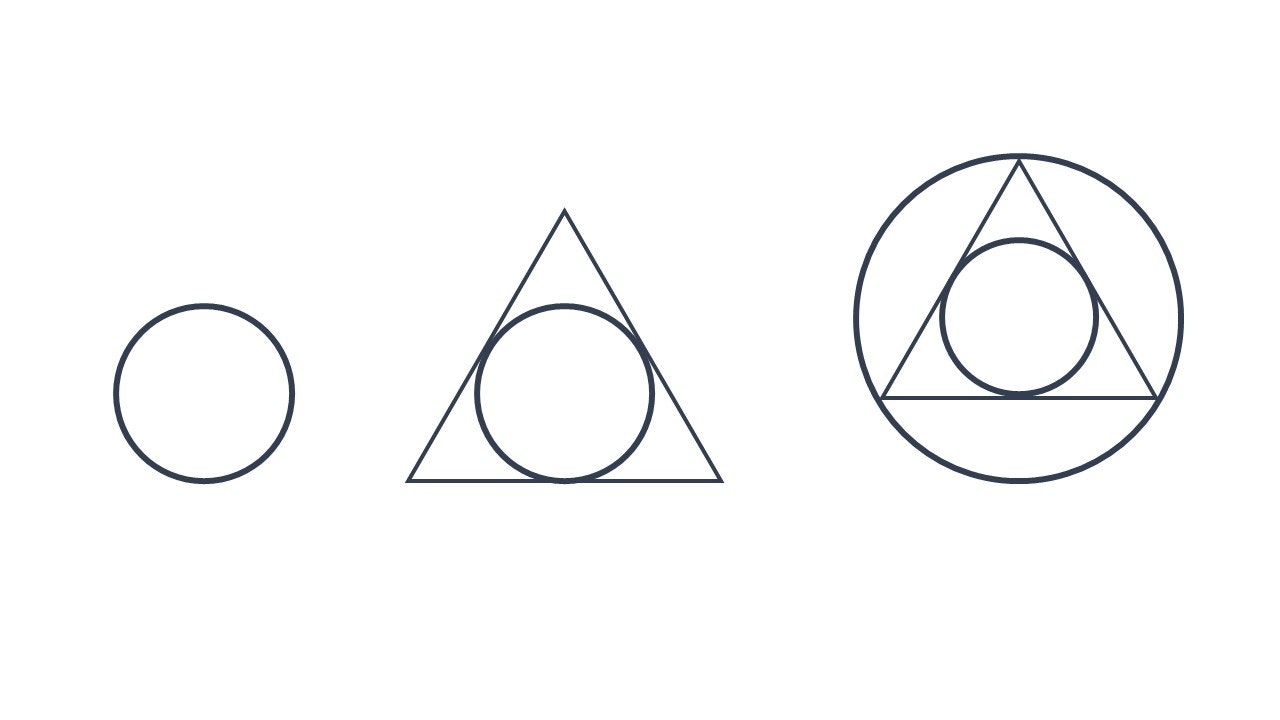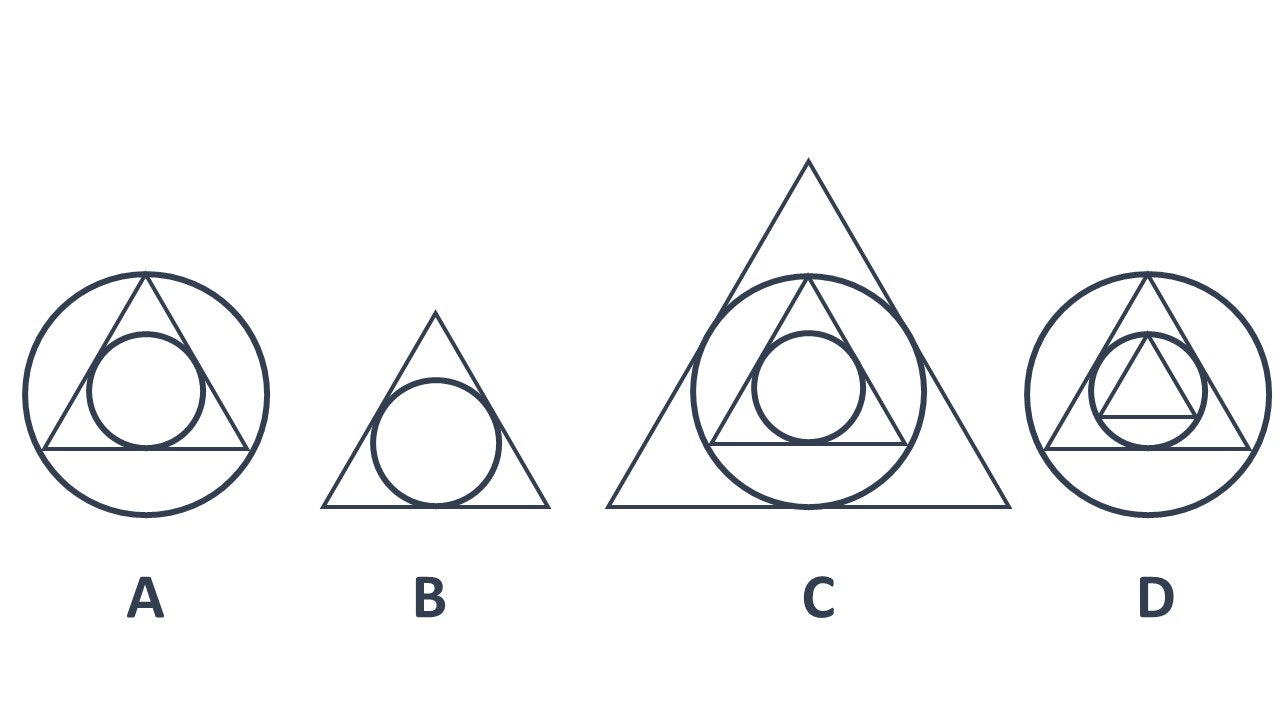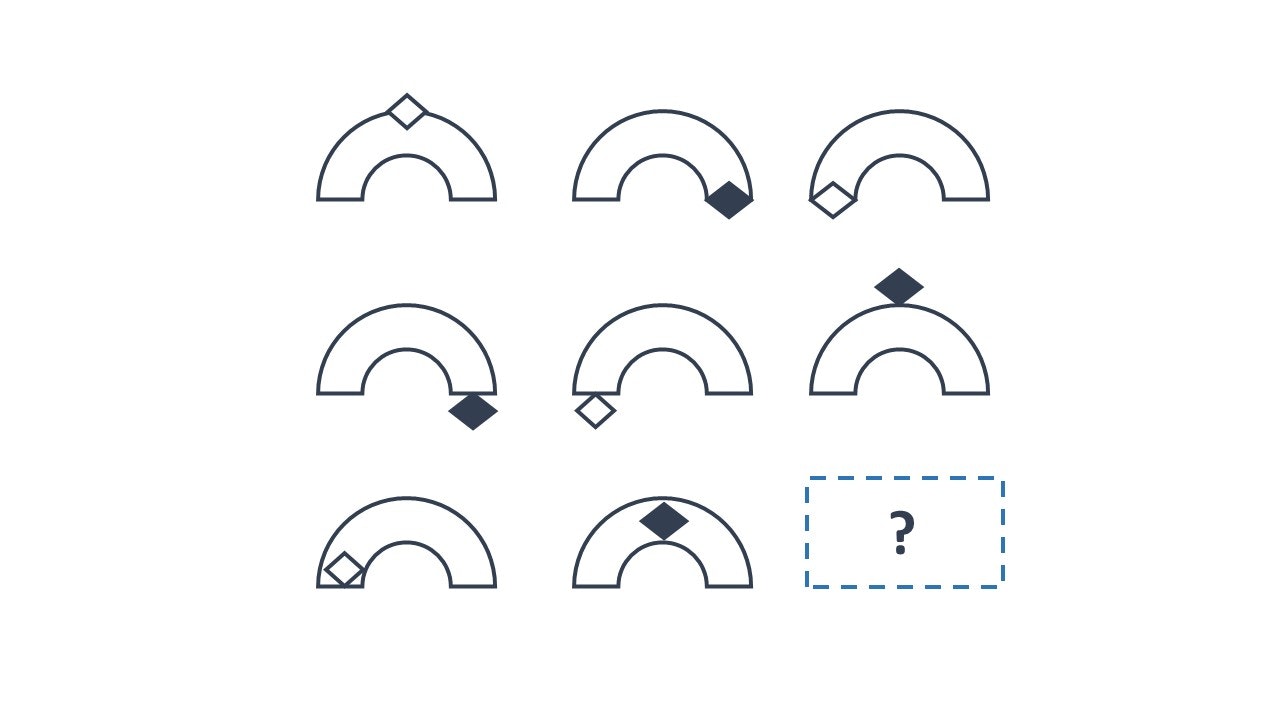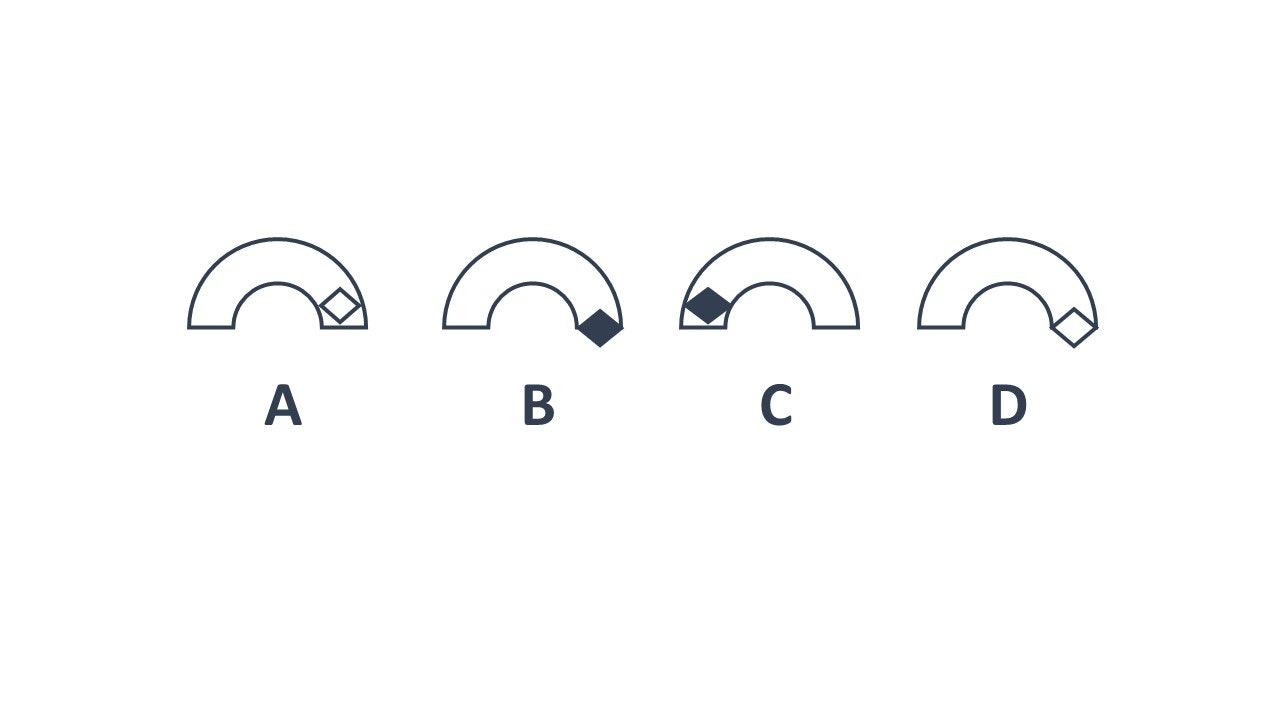The CCAT Test – Everything You Need to Know in 2025
Updated November 5, 2024
- What Is the CCAT Test?
- Why Is The CCAT Test Used?
- Cognitive Ability Vs Cognitive Skills Tests
empty
empty
- Technical Facts for the CCAT Test
empty
empty
empty
empty
empty
empty
empty
empty
- Companies Using CCAT Test
- What Can Help Increase Cognitive Ability and Get a Better CCAT Score?
empty
empty
empty
empty
empty
- What to Expect on the CCAT in 2025
- How Is The CCAT Test Formatted?
- How Is the CCAT Scored?
- How to Pass the CCAT in 2025
- Free Example CCAT Questions (2025)
empty
empty
empty
- Key Takeaways for Passing the CCAT Test
- Tips to Prepare and Ace the CCAT Test
- Frequently Asked Questions
- Conclusion
One of the most popular pre-employment tests available, the Criteria Cognitive Aptitude Test (CCAT) is a psychometric test used by employers during the hiring and recruitment process to gauge potential talents’ skills in many areas: problem-solving, attention to detail and spatial reasoning, to name a few.
This article describes the ins-and-outs of the test and offers aptitude test sample questions to help you practice for the CCAT.
What Is the CCAT Test?
One of developer’s, Criteria Corp's, most favored tests, the CCAT is a cognitive ability exam is formed of 50 questions and has a 15-minute time frame.
During it, you will be tested on your ability to obtain a fresh skill set, put your skills into place, and quickly solve problems.
According to statistics, most people cannot complete the full 50 questions, so finishing all the questions in the 15-minute timeframe shows excellent speed and efficiency too.
The CCAT test was developed to help recruiters in a variety of different fields decipher potential candidates sooner and save time and money if they were unsuited to the role.
For example, you might have an interview for a software development company that requires you to take the CCAT test.
They ask you to do this within the first interview to get an idea of your cognitive abilities before moving to the next stage.
Why Is The CCAT Test Used?
This CCAT test also helps recruiters figure out what skills you have developed from previous employers and how you can incorporate these into a new role.
The CCAT test, combined with a face-to-face meeting and your work history, sets the tone for the employer and gives them a broader understanding of your strengths and weaknesses.
Within the exam you will come across the following kinds of questions:
- Math and Logical (number series, word problems, critical thinking, etc.)
- Verbal (analogies, antonyms, sentence completion, attention to detail, etc.)
- Spatial (shape series, odd one out, matrices, etc.)
Candidates cannot use a calculator when taking the test.
More and more employers are getting on the cognitive ability test bandwagon, mainly because it can help them with the training and onboarding process, giving them an idea of the candidate’s ability to learn new skills and information.
Each area of questioning can give hiring managers insight into how fast a person learns and can use logical thinking, an important skill in many roles.
Another benefit of the CCAT exam for the employer could be to save time and money.
Sometimes, an interview process for a business can take a while, with multiple rounds, so doing the exam can save both hiring managers and candidates time if the candidates’ cognitive ability does not match with the role they are interviewing for.
The sooner a candidate knows they will not get the role, the sooner they can turn their attention to a new application.
Cognitive Ability Vs Cognitive Skills Tests
Cognitive ability tests and cognitive skills tests are both assessments that measure a person's cognitive functioning.
However, there are some differences between the two:
Cognitive Ability Tests
Cognitive ability tests are designed to measure a person's general cognitive abilities or intelligence.
These tests assess a broad range of cognitive skills and abilities, including verbal reasoning, non-verbal reasoning, quantitative reasoning and spatial awareness.
They aim to provide an overall assessment of a person's intellectual capabilities.
Cognitive ability tests often consist of standardized questions and are administered under controlled conditions.
They typically have a predetermined structure and scoring system. These tests are used in various contexts, such as employment screening, educational placement and research studies.
Cognitive Skills Tests
Cognitive skills tests, on the other hand, focus on specific cognitive skills or abilities rather than providing a comprehensive measure of general intelligence.
These tests assess individual cognitive processes and functions, such as memory, attention, problem-solving, logical reasoning and perceptual abilities.
They are designed to evaluate a person's strengths and weaknesses in specific cognitive areas or to diagnose specific cognitive impairments or disorders.
Technical Facts for the CCAT Test
Here are some technical facts about the CCAT:
Test Format
The CCAT is a computer-based assessment that consists of multiple-choice questions.
It is designed to be administered online, although paper-based versions may be available.
Test Sections
The CCAT typically includes three main sections: Verbal, Non-Verbal, and Quantitative. Each section assesses different cognitive abilities.
The specific number of questions and time allocated to each section may vary depending on the version and administration.
Time Limit
The time limit can vary depending on the version and grade level, ranging from around 30 to 60 minutes for each section.
Adaptive Testing
The CCAT utilizes adaptive testing methodology. This means that the difficulty level of the questions adjusts based on the student's performance.
If a student answers a question correctly, the subsequent questions may increase in difficulty, while incorrect answers may lead to easier questions.
Grade Levels
The CCAT is available for various grade levels, typically ranging from kindergarten to grade 12.
Different versions of the test are tailored to the specific cognitive abilities and developmental stages of each grade level.
Scoring
The raw scores are typically converted into percentile ranks, stanine scores or other standardized scores to compare a student's performance with a normative group of students of the same grade level.
Interpretation
CCAT scores provide insights into a student's cognitive abilities and can help identify areas of strength and weakness.
They are often used for educational placement, gifted and talented program eligibility and academic screening purposes.
Test Publisher
The CCAT is developed and published by various test publishers, including Canadian Cognitive Abilities Test (CCAT), Canadian Test Centre (CTC), and others.
Each publisher may have its own specific version and guidelines for administration.
Companies Using CCAT Test
The CCAT is a widely used cognitive assessment tool, and many companies and educational institutions incorporate it into their hiring or admissions processes.
Here are some examples of well-known organizations that have been reported to utilize the CCAT or similar cognitive ability tests:
- Microsoft
- Amazon
- IBM
- Goldman Sachs
- McKinsey & Company
- Procter & Gamble
- General Electric
- Citigroup
- Ford Motor Company
What Can Help Increase Cognitive Ability and Get a Better CCAT Score?
If you are unsure where you stand with your own cognitive abilities, there are many factors to help you improve.
Think of it like exercise – by doing brain training, you keep ‘moving’ your mind and it gets stronger.
Here are five things you can do to improve your cognitive abilities before taking the CCAT test:
1. Exercise
Physical movement can really help focus your mind. It relieves the stress you may not even know you were carrying. It releases endorphins, which are chemicals that relieve stress and pain, making it a great way to relax – especially yoga and Pilates.
2. Sleep
Most people need at least 8 hours of good sleep per night.
Improve your sleep by setting a regular bedtime routine, which should involve turning off electronic screens an hour before bed.
Practice CCAT Test with JobTestPrep
3. Read
In that hour before bed with no screen time, consider reading.
With every book or article that you read, your brain obtains information it might not have had before.
This could be specific facts from the book’s content or more generally, building up your understanding of how to think well.
This information stays within your subconscious, so even though you might not know that you know something, it can rise to the surface in response to questions or situations.
4. Play
Humans are one of the few species that consistently plays into adulthood, because it helps us learn.
Playing an instrument or thought-provoking boardgame can test the brain and put it into action while being self-rewarding so you do more of it.
So, if one of your hobbies is playing the guitar or puzzle games, then try and do more of this before the test.
5. Relax
Relaxing your mind and switching off can help your cognitive behavior.
Removing stress frees up more mental capacity to work on other things, such as psychometric tests.
You could even try meditation, which allows you to be more mindful and gain focus.
Hanging out with people that make you happy is also a good way to improve your cognitive function, as conversing with them is learning too.
What to Expect on the CCAT in 2025
As mentioned above, the CCAT test contains 50 questions ranging in topic from math to verbal.
You are given a time limit of just 15 minutes to complete as many questions as you can – past results show just 1% of candidates complete all 50 questions.
So, you are very much not alone if you cannot complete all the questions.
Completing more questions does show greater efficiency, but it is more important to get the questions correct than it is to answer all of them. Quality over quantity.
Some questions on the exam might seem strange or make you panic because they are not based on specific knowledge. These are testing your ability to think logically – to look for patterns or underlying reasons why something is the way it is.
Answer these to the best of your ability. You can practice logical reasoning tests here.
The CCAT is just one of the factors recruiters will take into consideration, so try not to worry too much about the exam.
How Is The CCAT Test Formatted?
Before you start the CCAT test, you will be given thorough instructions.
You must read these thoroughly before starting the exam timer, as you do not want to miss something that was ironed out at the beginning.
The CCAT test will be formatted into different sections based on subject, as mentioned above, with multiple-choice questions in each.
Sometimes the answers are text and sometimes images.
If you are unsure about a question or do not know the answer, it is better to take the chance and answer the question then leave it blank – you might choose the right answer and you are not penalized for wrong ones.
Once the 15 minutes are up, your results will be sent directly to the hiring managers so they can see how you scored.
The results will be separated into categories of math, verbal and spatial reasoning, with a score for each section – this allows the recruiter to see your strengths and weaknesses clearly and concisely.
You may be allowed to take a practice test beforehand to prepare yourself more.
How Is the CCAT Scored?
The hiring manager will be sent your CCAT raw score and your percentile ranking once you have completed the exam, this will be in the form of a score report..
The raw score is the number of correct questions you have answered. The percentile is how well you did in comparison to the others taking the test.
Your CCAT results will be shown on the front of your test in both number and chart form, as well as percentiles relating to more specific categories, such as spatial reasoning.
In a nutshell, a percentile rank of 45 would mean you scored better than 45% of the others taking the test.
The CCAT scoring system is determined by the position you are applying for.
The overall average score is usually 24/50. However, if you are applying for a more senior role in an industry like tech or finance, it would be good to score at least 30/50.
If you score between 35-45 you would be in the top 30%.
Here are a few examples of score ranges per industry:
- Computer programmer – 23 (low) to 40 (high)
- Financial analyst – 23 (low) to 38 (high)
- Network administrator – 23 (low) to 37 (high)
CCAT scores are calculated immediately and as soon as you have completed the test your results will be sent directly to the hiring manager who initiated the exam.
The second page of your report shows how you did in relation to Criteria Corp’s expected ranges for various roles.
Some employers will go through the exam with you and provide feedback, whereas others might be more discrete.
If you want 12-month access to all the practice resources for this test, our partner TestPrep-Online.com offers a Family Membership.
Family Membership gives you access to all the TestPrep-Online resources for the next 12 months. You will also get two separate accounts, which can be very helpful if you have two children preparing for their tests.
Get a Family Membership with 12-month access
How to Pass the CCAT in 2025
Like studying for an exam, you can prepare yourself for the CCAT test. The hiring manager of the job you are applying for should give you enough notice beforehand so you have time to prep and do a practice run or two.
The strategies mentioned above regarding improving your cognitive abilities definitely apply here, and here are seven more steps to success:
Step 1. Keep Energized
This might go without saying but try to stay energized – this does not mean overdose on coffee, but stay hydrated enough and eat a balanced diet.
It will help you have a clear head and feel ready for the exam. You do not want to feel lethargic before a test.
Step 2. Take Practice Tests
Do practice tests and note down any of the main criteria where you are lacking.
For instance, you might not have scored that well in math on the dummy run, so you can study some math questions to be ready for the real thing.
Criteria Corp offers comprehensive preparation help on its website, so don't forget to check this out before your test.
Step 3. Time Yourself
This will help you get accustomed to the 15-minute time limit, making it something that you are used to rather than one more stress.
The time taken to read the instructions will not count towards these 15 minutes, so you can focus all your time on the questions. The more practice you get the better.
Step 4. Prioritize the Subject You Excel At
For instance, if you are better at math than verbal, then do all those questions first or leave yourself more time to do them. This way you will be devoting more time to questions you are more likely to get correct.
Step 5. Take Time Out Between Practice Runs and Your Actual Exam
The questions on the practice paper will always be different from those on your specific exam as they are curated based on the industry and job you are applying for, so having them swirling in your mind could be unhelpful.
You need your mind to be as focused as possible; a short break will refresh it without losing any gains.
Step 6. Explore Shortcuts to Cut Down Your Time per Section
These can be learned during practice runs. Every little helps.
Step 7. Consider Investing in an Official CCAT Course
If the exam is the main factor in you getting your role, this will ensure you are fully prepped to answer as many questions as possible.
Criteria Corp has developed an app to help you practice the skills measured by the CCAT.
Free Example CCAT Questions (2025)
Here are a few examples of typical questions that you might receive in each section.
Use them as practice questions to help you get an idea of what to expect.
Math and Logic
The CCAT math and logic questions in the CCAT test are not designed to determine your basic math knowledge.
Instead, they investigate your numerical reasoning ability; in other words, how quickly you can think critically and find a solution.
Most of the questions will need logic to get the answer right.
As mentioned earlier within the article, calculators are not allowed, but you can do your working out by hand if necessary.
Here are what some math and logic questions might look like:
1. You have been given a recipe for 18 chocolate cupcakes that needs 3/4 cup of caster sugar. How much caster sugar would you need to make two dozen cupcakes using the same recipe?
a) 3/8 cup
b) 1 cup
c) 1 1/3 cup
d) 1 1/2 cup
2. A wireless headset costs $120. Its price increased by 20% and then by another $24. What is the total percentage (%) rise in price for the wireless headset?
a) 25%
b) 40%
c) 50%
d) 30%
There are several ways to work out the answers to these questions, so if you feel this is your weakest areas you should brush up your skills on percentages and fractions.
There are also helpful guides on calculating ratios.
Verbal
Here are a couple of example verbal reasoning CCAT questions to get you started:
1. What is the opposite word to 'introvert'?
a) Happy
b) Excited
c) Extrovert
d) Loner
2. Sally tried her best to see the –[blank]– of applying for a new job, but she still was not convinced.
a) Initiatives
b) Doubt
c) Observance
d) Benefits
The verbal part of the CCAT test allows potential employers to gauge the candidate’s vocabulary, use of context and overall understanding of the meaning of certain words and phrases.
These skills will come in handy if you are applying for a client-facing role and must communicate with people successfully daily.
Industries such as advertising, marketing and sales might require higher communication marks than other industries, so please consider this when prepping for your exam.
Spatial Reasoning
This section of the CCAT test might seem the most random, however, employers do have good reasons for requiring it.
Spatial reasoning helps a company understand your ability to problem solve, think critically and analyze patterns, amongst other things. It will also show them how well you identify icons and shapes.
If you want 12-month access to all the practice resources for this test, our partner TestPrep-Online.com offers a Family Membership.
Family Membership gives you access to all the TestPrep-Online resources for the next 12 months. You will also get two separate accounts, which can be very helpful if you have two children preparing for their tests.
Get a Family Membership with 12-month access


1. Which of the figures above comes next in the sequence of figures shown above?
These types of questions might take some getting used to, however, the practice tests should help you with this and wire your brain to see the patterns emerging.
You could also have a question like this:


2. Complete the missing frame from the answer options given above.
Now that you have seen the types of questions you might receive; it will give you the chance to prepare accordingly and show the hiring manager your best.
Key Takeaways for Passing the CCAT Test
This must seem like a lot of information to take in. Here are the key tips for passing the CCAT.
Once you have taken note of the following, you should be able to prepare yourself as you would for any exam.
Remember to:
- Practice, practice, and practice again – As the saying goes ‘practice makes perfect’, and the more familiar you are with the test structure the more you can concentrate on the questions
- Manage your time and expectations
- Work on your weaknesses
- Take breaks between practice tests and between practice and the real CCAT
- For any questions that feature imagery, look at the picture both vertically and horizontally
- Try not to worry – Your CCAT score is only one of the many features employers look at.
Tips to Prepare and Ace the CCAT Test
The CCAT is a cognitive assessment often used for gifted and talented programs or academic admissions.
To perform well on the CCAT, consider the following tips:
-
Understand the Test Format: Familiarize yourself with the structure and format of the CCAT.
-
Practice Sample Questions: Seek out sample questions or practice tests that simulate the CCAT format and difficulty level.
-
Develop Cognitive Skills: The CCAT measures cognitive abilities such as verbal reasoning, non-verbal reasoning and quantitative reasoning.
-
Time Management: The CCAT is a timed test, so it's important to manage your time effectively.
-
Review Foundational Knowledge: While the CCAT assesses cognitive abilities rather than specific curriculum knowledge, reviewing foundational skills in math, reading and language can be helpful as these skills often correlate with cognitive abilities.
-
Understand Question Types: Learn the different question types commonly found in the CCAT and understand the strategies and approaches for each type.
-
Analyze and Learn from Mistakes: Review and analyze any mistakes you make during practice.
-
Seek Guidance: Consult with your teachers, tutors, or academic advisors for insights into the CCAT and recommended study resources.
-
Maintain a Positive Mindset: Approach the CCAT with a positive and confident mindset.
-
Take Care of Yourself: Prioritize self-care during your preparation. Get enough rest, eat nutritious meals, and exercise regularly.
Frequently Asked Questions
No, the CCAT test is not considered to be an IQ test. An IQ test checks a candidate’s intellectual quotient, whereas the CCAT tests a candidate’s cognitive abilities. There are similarities between IQ tests and the CCAT, but they are not the same type of assessment.
As part of your preparation for the CCAT, you may wish to access CCAT test sample resources online. These offer a useful way to practice for the CCAT.
JobTestPrep provides a range of useful free and paid-for CCAT test sample resources, including practice tests, step-by-step explanations and time management tips.
The most difficult aspect of the CCAT is the limited timeframe. Candidates are faced with 50 questions to answer within 15 minutes. If you find this daunting, remember that very few people manage to answer all of the questions within the time limit and the average score is just 24.
The individual test questions on the CCAT are not particularly difficult. However, trying to answer all of the 50 test questions within the 15-minute time limit is likely to be very difficult and stressful. You should spend time practising time management techniques as part of your CCAT test preparation.
The pass mark for the CCAT is set by the employing organization. Your test result will include a raw score and a percentile score. The raw score is the number of questions answered correctly and the percentile score shows how you performed in comparison to other test-takers.
To get the best possible score on the CCAT, it is important to put in plenty of preparation. This will help you to become familiar with the test format and practice your time management skills.
Remember to answer the questions that you feel most confident with first, then go back to any you are unsure of – there is no penalty for answering incorrectly, so it is always best to guess than leave an answer blank.
Schedule the test for the time of day when you work best, get plenty of sleep the night before and eat a healthy, nutritious breakfast.
This will depend on the position you are applying for. According to JobTestPrep, the average CCAT raw score is 24. In general, scoring within the top 20% of candidates is likely to put you in a good position. To achieve this, you will need a raw score of around 31. A score of 42 or over is likely to stand you in good stead for any job that the CCAT tests for.
Each employer sets its own passing score for the CCAT. There will also be a different passing score for each type of job role within an organization. If you score above the passing score for the job role you have applied for, your application will likely move forward to the next stage of the hiring process.
Many major employers use the CCAT as part of the hiring process. Companies that use the CCAT include Dominos Pizza, Vista Equity Partners, First Global, Churchill MOrtgage and Ocean Spray Cranberries.
CCAT results include a raw score, percentile score, breakdown of each section and suggested score ranges.
The raw score is how many answers you answered correctly out of 50. For example, a raw score of 25 means that you answered 25 questions correctly.
Your percentile score shows how you performed in comparison to other test-takers. For example, a percentile score of 80 means that you performed better than 80% of other candidates.
The breakdown score for each section shows how well you performed in Math & Logic, Verbal and Spatial Reasoning. Breakdown scores are given as a percentile score so that you can see how you performed against other candidates.
The suggested score ranges are used to show whether you scored within the suggested score range for the job role you are interested in.
Your CCAT results will show a summary of your raw score and percentile score. The raw score indicates how many questions you answered correctly. The percentile score shows how well you performed in comparison with other test-takers.
You will also receive a percentile score for each of the subsections: math & logic, verbal ability and spatial reasoning. A percentile score of 50 means that you scored higher than 50% of other test-takers. A percentile score of 75 means that you scored higher than 75% of other test-takers.
The policy regarding retaking the Cognitive Abilities Test (CCAT) may vary depending on the administering organization or educational institution.
It's important to refer to the specific guidelines provided by the organization or school that administered the test to determine their retake policy.
Conclusion
When it comes to the hiring process, employers are looking at several attributes when making their decision, and your CCAT result is just one of many.
Make sure you put a proper amount of effort into the other parts of the recruitment process, such as the interview and other assessment tasks.
If your CCAT score is not what the employer wanted, it means the job would have been a bad fit for you anyway.
Perhaps take some personality assessments to get to know yourself better and find a good-fitting role.
You can also advise the recruiter of the best time of the day for you to take the test. This should be when you are at your most energized and productive. For instance, if you are not a morning person, you do not want to take a test where you must analyze shapes as soon as you wake up. Schedule it for a time of the day when your mind is at its most dynamic.
Try to ensure there are no distractions when you are taking the exam. For instance, if you are taking it at home, you could do it whilst your kids are at school or housemates at work. It is only 15 minutes – make sure you do not have anything else that will require your attention during the test.
Finally, there are many resources and test papers out there that can help you prepare for the exam so just do a little research and you are good to go.





